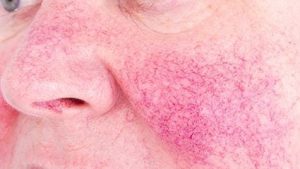
IF YOU’RE UNDER THE AGE OF 35, you’ve been there. Show an interest in transient, material things — such as fashion or pop culture — and you’re tsked for not focusing on more important issues. When speaking up about politics or injustice, however, you’re told that your generation has nothing to contribute to the conversation, and that you should all just sit down and be quiet. Obviously, it’s possible to care about things both shallow and deep at the same time, but Millennials and younger generations are not granted this luxury.
Wading hip-deep into this catch-22 — which, it should be noted, is older than Millennials and even some of their parents — is Teen Vogue, the Condé Nast magazine for teenage girls too sophisticated for Seventeen. Since it was first launched as a kid-sister publication to Vogue in 2003, Teen Vogue has been a staple for well-to-do fashionistas in Generations Y and Z.
But cute accessories and celebrity interviews aren’t the reason Teen Vogue is making headlines today. The magazine shifted toward identity and serious issues when Elaine Welteroth — herself a Millennial woman of color — took over as editor-in-chief in May 2016. Together with editorial director Phillip Picardi and creative director Marie Suter, Welteroth “moved the magazine more aggressively into covering politics, feminism, identity, and activism.” Things came to a head in December, when Teen Vogue published weekend editor Lauren Duca’s op-ed, “Donald Trump Is Gaslighting America.”
Named for the 1944 film Gaslight, “gaslighting” is a form of psychological abuse, in which one person manipulates another into believing that their own recollections of events are somehow faulty. As Ben Yagoda notes in The Chronicle of Higher Education, the Trump administration’s gaslighting — whether via “alternative facts” or other means — earned the word an appointment as the American Dialect Society’s Most Useful/Likely to Succeed Word of the Year for 2016. Yagoda writes:
The new prominence [of “gaslighting”] came from Donald Trump’s habitual tendency to say “X,” and then, at some later date, indignantly declare, “I did not say ‘X.’ In fact, I would never dream of saying ‘X.’”
Teen Vogue wasn’t alone in calling out Trump’s walk-backs as gaslighting, but Duca’s unexpected and blatantly political article brought the magazine to the forefront of a long-brewing conversation about the Trump administration’s validity. And calling out the regime’s denial of even the most incontrovertible evidence wasn’t the only progressive message Teen Vogue had for readers last year, as it also touched on “everything from gun control to Black Lives Matter.” Nevertheless, “Donald Trump Is Gaslighting America” was the article that put Teen Vogue on the adult-oriented media map, and put Duca in the hotseat with Fox News’ Tucker Carlson, an interview that highlighted Teen Vogue’s position at the intersection of age and gender.
Duca, Welteroth, and the rest of Teen Vogue are disparaged for having the audacity to be political as Millennial women and as a publication aimed at teenage girls. Although anyone can be attacked by conservative media outlets for daring to speak out against the Trump regime’s harmful rhetoric, it’s difficult to imagine Carlson yelling over a middle-age male sportswriter for the entirety of an interview, before telling him to relegate his writing to Final Four predictions instead of politics.
Yes, Teen Vogue runs hard-hitting political coverage between profiles of former One Direction members and tips on how to steal Demi Lovato’s street-style look. That’s only anachronistic if you think that young women cannot be interested in two things at once — or, more insidiously, if you think they shouldn’t have an interest in politics and other issues of worldwide importance.
Furthermore, it’s worthwhile to note that fashion, celebrity news, and cosmetics are only considered flippant because the people who are the most interested in them are women, particularly those of a certain, younger age. For contrast, think of the widespread attention that fashion’s masculine cousin, sports, receives: on your nightly news broadcast, in your favorite bar, and on the myriad cable channels devoted to it. Fashion and cosmetics certainly have more real-world implications than the Super Bowl, but you won’t see highlights from the latest runway show on your local news at five. Sports are masculine, and their masculinity brings them out of the niche and into the mainstream. That’s why women can watch the World Cup — and even rack up a few Cool Girl™ points for it — but men cannot enjoy Kardashian coverage without drawing ridicule.
With Trump’s administration consistently disparaging negative polls and dissenting news outlets, journalists, and commentators as “fake news,” it’s more important now than ever to pay for quality journalism, when and if you are able. The New York Times and Vanity Fair are sure bets, given their frequent tussles with Trump and his regime, but, if you want your finger on the pulse of the U.S., a Teen Vogue subscription is hard to beat.
















